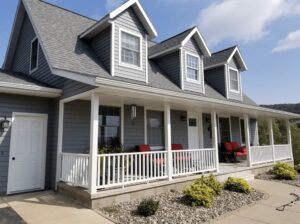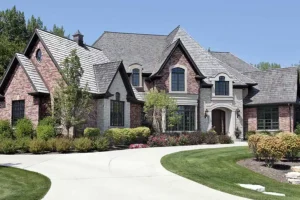Staying Warm in Your Log Cabin: How to Insulate

With the increasing need to escape the city’s hustle and bustle, more and more people opt to switch up their living situation in favor of log cabins. Thanks to contemporary manufacturing and design, log homes are made to last and meet the needs of modern users, with all the available amenities and gadgets one would need in this day and age.
Despite the higher interest in log homes, many people are still unsure about the insulation properties of a log cabin. That said, consider the following tips to keep your cabin environment warm, cozy, and comfortable.
Insulate the Cabin Walls
How do you go about insulating the walls of your log cabin the best? The most important thing is what type of wood you’re going to choose for the building material. At https://www.timberliving.ie/, they recommend timber as the most durable and appealing choice with top insulating properties. Of course, your final choice will hugely depend on your location and climate.
That’s not all, however. Talk to the manufacturers before the process of building starts to make sure they’ll provide you with air-tight joints which will effectively conserve the energy and temperature inside. It’s also possible to go with caulking between the logs to further prevent drafts.
If you wonder why there’s no mention of cladding or stud walls, it’s because wood is a natural material that tends to shrink and expand with the change of seasons. Using these would cause the wood to crack, thus creating an even bigger issue. Building with very thick logs might not even require any additional insulating work as natural wood is a good insulator in the first place.
Floor Insulation
Floor insulation can make a big difference when it comes to the warmth and comfort of your log home. It’s estimated that this practice can actually minimize the annual heating bills for up to 20%.
The most important step, in this case, is to first install a membrane that’s resistant to moisture. It doesn’t matter whether your log cabin has a higher ground foundation or rests on stilts, you can’t do without a moisture-resistant membrane. Only then should you start layering thin wood pieces to lift up the floor of your log home from the ground.
It’s crucial that the insulation fits perfectly, which is why it’s always better to leave this bit to the professionals instead of trying to complete the work all on your own.
Roof Insulation
Just like floor insulation, insulating the roof of your cabin can top the whole process off nicely. Roof insulation requires the same steps as floor insulation but in reverse, meaning that the insulation will sit over the roof. This is due to the fact that the majority of log homeowners want to enjoy the beautiful and rustic look of the high ceilings and rafters from the inside.
Again, make sure that you install an adequate moisture-resistant membrane and only then have the insulation put in place. The most common choice is the combination of sheets and batons.
Keep in mind that batons have to be placed on the roof’s edges and positioned evenly by following the length of the roof. To prevent a flat look against your rafters, make sure to keep a small airflow gap open, just like you would with floor insulation.
Double-Glazing
If you’re working with logs that are at least 58mm wide, you can also benefit a lot from double-glazed windows. Why is the width of your logs important, you may ask? Well, if logs are any smaller in diameter than 58mm, they themselves won’t be good insulators. Having double-glazed windows, in this case, won’t mean much because the biggest point of concern in terms of insulation will be your walls.
In case you are working with wider logs, you’ll only be left with windows to worry about as possible spaces where cold air can creep in. Double-glazing can effectively solve this issue, keep the inside of your cabin nice and warm, help you lead a more energy-efficient lifestyle, and save you some money in the long run.
If you live in a very cold climate where there’s a lot of snowfall, you shouldn’t even think about building a log cabin without logs that are at least 10 inches wide. But if your climate is much milder, you can easily get away with thinner logs; just make sure to ask for the manufacturer’s expert opinion on the matter. Trying to be frugal in this case won’t mean much if you’ll have to use a lot of electricity to keep the interior warm.






